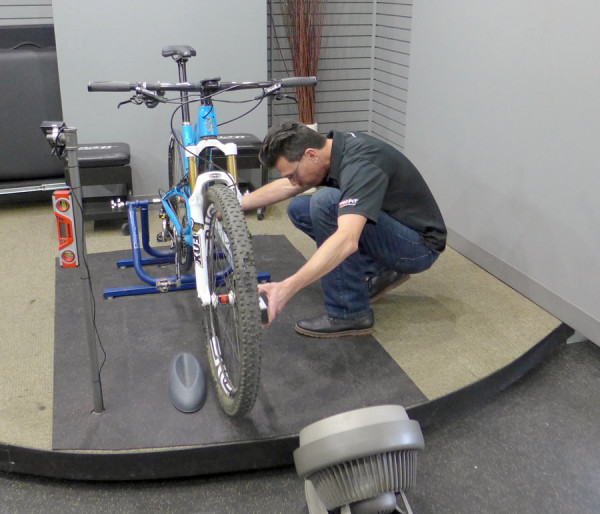
Working into the process of building the custom Matter Cycles BeneFat, I wanted to make sure that all of this effort was not wasted, and that the bike fit me well. I owned about 30 different mountain bikes in the last 15 years, and I’ve always been able to dial in a comfortable position. However, even though they were comfortable, I never knew if they were actually right for the flexibility and geometry of my body, since most of my setup was guess-work.
Deciding to use the bike I spent the most time on recently, and was very comfortable on, I went to Erik’s Bike Shop for Certified Master BG Fit Technician Jason Wolf to insure I was on the Ibis Ripley properly. In addition to dialing in the Ibis, it would give me the fit geometry numbers I needed for the BeneFat.
What I found was really interesting. While I was comfortable, there were quite a few changes that could be made to fit the Ibis better, and make sure the custom bike was truly dialed in. Read on to see the results and why every cyclist should get a fit someday…
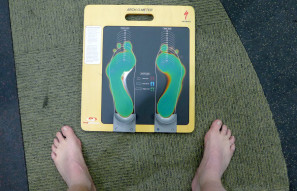
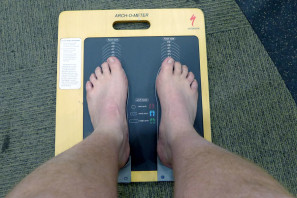
The fit started with a wide variety of body measurements, as well as the unique foot and butt measurements specific to the Specialized Body Geometry program to also insure proper saddle and shoe fit. As a part of their Body Geometry program, Specialized offers measuring tools to properly fit a person to their accessories. More than just sizes, Specialized offers saddles in up to 4 widths, shoe insoles in 3 different levels of arch support, Varus and Valgus shoe shims, differing shoe widths, as well as other items.
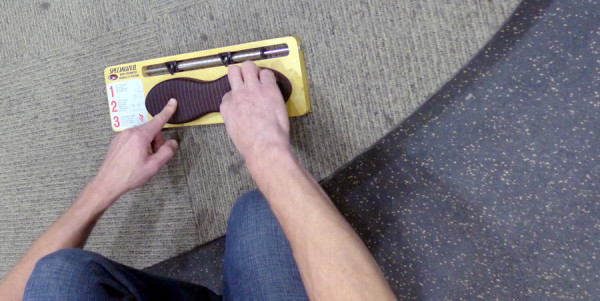
Usually around $250, a fit is a really good insurance plan to start with before having a custom bike built. It is a good place to check your assumptions, as even though I consider myself an “expert” bicycle mechanic, and I felt comfortable on my bike, another set of eyes trained to look for certain things can help verify your fit at the least, or in my case, find some areas to be corrected to be even better on the bike.
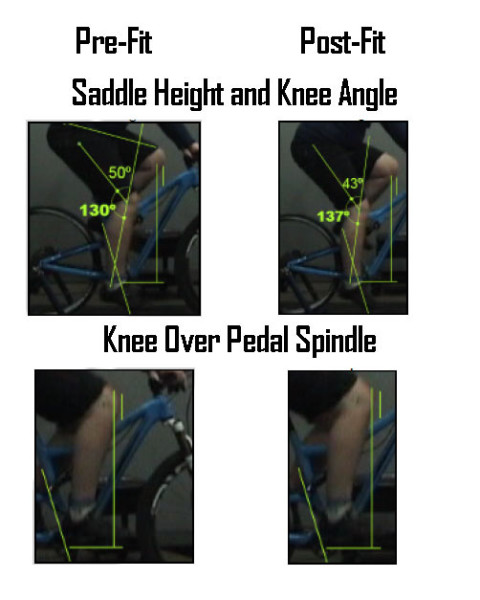
There are a lot of outputs from the fit, as Specialized uses a Compu-Trainer and video capture with markers on body points to analyze your ride pre-fit, and then post-fit. As you work through the fit, the technician has you ride up to around 80% effort for a decent amount of time, and then runs a video capture for a few seconds. Then, from identifying markers placed on joint areas of your body, they can measure how you are on the bike, and compare them to the flexibility measurements taken earlier while off the bike. When its all done, a very detailed PDF document with before and after measurements is provided, which can be used to help your custom builder dial in the perfect bike for you.
RESULTS:
- Generally, I was too cramped and bent over on the Ibis. The bike was set up with a straight seatpost and 90mm, 0 degree stem, but to get to proper position, I should be on a seatpost with about 25mm of setback, as well as a 110mm stem with 10 degree rise. Those numbers are specific to the Ibis, revealing that I should actually be on an XL sized frame Ripley. This is all relative, as I was comfortable on the Ripley as it was, but this fit revealed areas where it may have been pushing my body beyond what is comfortable.
- Due to the straight seatpost, my knee was too far forward over the pedal, by about 3cm. I was also running the saddle a bit too low, and the fit resulted in giving me some replicable numbers for future bikes of an 82cm saddle height from BB center to top of seat, and the center of the saddle being 8.4cm behind the BB center. When replicating these two numbers, my knee will always be in the proper position over the pedal, assuming I always use 175mm crank arms.
- I have a moderate amount of limited flexibility in my hip flexors, so it was measured that I have about a 100 degree angle between my back and femur at the top of the pedal stroke. This was determined by measuring the flexibility of my hips off the bike. Before the fit, this was at about 107 degrees, caused by too much bar drop. The fit helped me find that my proper reach is 56.2cm with about 3.5cm of drop to the handlebars to achieve the 100 degree angle.
- The largest problem I had was a mis-alignment of the hips while on the bike. When measured from behind, my right hip was almost an inch further back than my left hip. This could have been caused by a few things, but there is no exact science. The proper saddle width helped even them out a little bit, and then some Varus shimming of my left foot to compensate for my knee diving inwards a bit at the top of the pedal stroke. Both of these straightened out my hip a bit, and will help in the future with setting up any bike, since the shimming was in my shoes, and I was changed to a wider saddle.
- Most of all, I now have a very good set of baseline numbers that will help Collin Schaafsma at Matter bikes create the perfect fit on my BeneFat, but also help me set up future stock mountain bikes properly from the first ride.